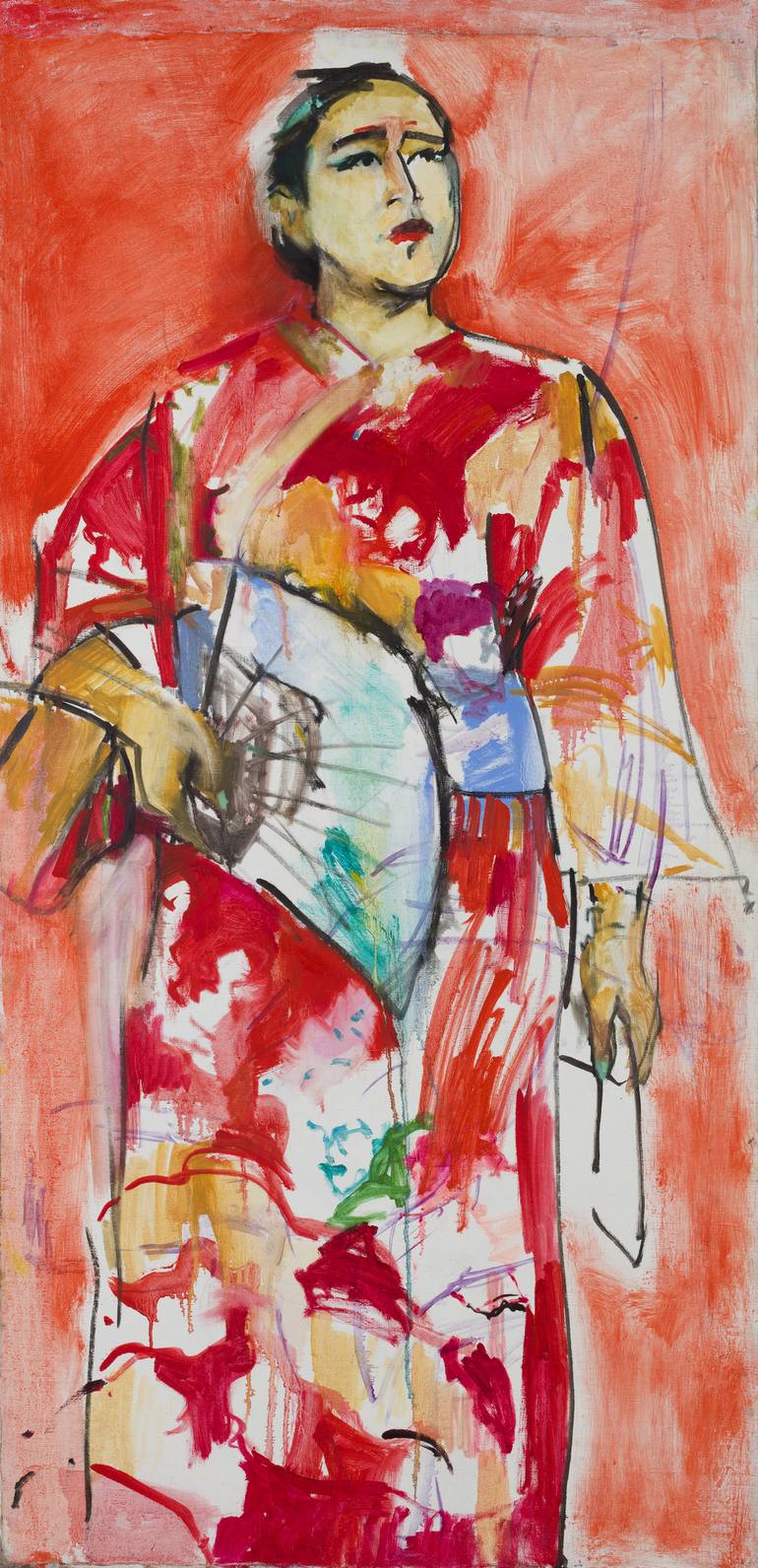



VIEW IN MY ROOM
Fan Dance in the Edo Period Painting
Russia
Painting, Oil on Canvas
Size: 26 W x 53 H x 1 D in
Ships in a Tube
Artist Recognition

Artist featured in a collection
About The Artwork
Xenia Prokhorova has been interested for a long time in Japanese art, Japanese culture and Japanese mentality. She was very impressed, when on a visit to Japan, with the singularity of the Japanese plastic arts in their synthesis with music Xenia says the following about this painting: “I painted Fan Dance in the Edo Period after my first trip to Japan in 2015. I brought back a kimono from there and many impressions. This painting is my way of representing in color my emotional experience related to Japan, to what I could feel and what I could see while staying there. This was a short, but vivid moment, and its vibrancy and novelty were captured in this painting.” Xenia makes use of such a device as retrospectivism in some of her pieces in the “portrait” series—she does this by putting some traditional dress on her model, yet avoiding needless details that would make the spectator look for the historical accuracy of the costume, thus distracting him from the artistic image per se, from an association. Red color (which is the color of life in the Japanese tradition) dominates in this work, increasing the intensity of the whole figurative plane, while the model’s face remains calm and detached, with a Buddha-like smile of enlightenment on it. The fan in the foreground is seen in Japan—depending on the fan’s position—as a symbol of life, of the roads we choose during our life, and of the flow of time. It is also an attribute of Shinto goddess Amaterasu. Fan dance relates the story of the fan, its first appearance and its importance for the lives of the Japanese. Aiming to further develop the imagery, Xenia uses stylistic elements of Art Nouveau, a style which emerged through a close connection to ukiyo-e, the Japanese woodblock printing, to Post-Impressionism and to Expressionism serving as an idiom of emotional expression of the plastic solution. The line and the contour, being a great means of expression, narrow the distance between painting and Japanese xylography.
Details & Dimensions
Painting:Oil on Canvas
Original:One-of-a-kind Artwork
Size:26 W x 53 H x 1 D in
Frame:Not Framed
Ready to Hang:Not applicable
Packaging:Ships Rolled in a Tube
Shipping & Returns
Delivery Time:Typically 5-7 business days for domestic shipments, 10-14 business days for international shipments.
Handling:Ships rolled in a tube. Artists are responsible for packaging and adhering to Saatchi Art’s packaging guidelines.
Ships From:Russia.
Customs:Shipments from Russia may experience delays due to country's regulations for exporting valuable artworks.
Have additional questions?
Please visit our help section or contact us.
Russia
My art is based on a single principle: artistic presentation of esthetic interests. These interests define the goals which I set to myself as an artist. Creating the Portrait of a Human Being is at the center of my interests, it is the end goal of my artistic work. I like watching people, their facial expressions, their body language, movements and silhouettes. Revealing human character and individuality through uncovering those of their aspects that prompt adoration and admiration—this task never makes me bored, and it will always be the source of my inspiration. I have a feeling that a person’s inner character, the portrait of his soul is always expressed through his special, unique, yet very tangible and specific body mobility. At times, when I am absorbed in my work, I feel as if I were like clay, pliable, clinging to someone and surrounding his form without omitting even a single small bump or corner so that the person’s inward nature can be experienced through the physical sensation of his movements. I encounter such people everywhere, those, whom I cannot but draw or paint when I see them, noticing their facial expressions, their movements and silhouettes, their choice of clothing. My artistic inspiration, my creative impulse, at times bordering on suspense, might happen suddenly, at any moment, and then I would use any available materials in order to capture my mental image, my insight and empathic vision. Jogging in the park, for example, I may see a complete stranger sitting gracefully, with his legs crossed, at the shore of the Yusupov Pond and smoking. Then I may get agitated noticing his disproportionately long, ungainly legs that look just like those of marionettes. Or the splash of his simple white scarf against the background of his black garment: a bubble coat, which underscores his expressionist stooped back, and jeans hugging his overlong legs. Or even how his scarf is awkwardly tied in front of him, dangling as on a child. Capturing his wild gaze—he stares at me with one eye, the other hidden by his hood—I stop there and start drawing sketches of him with my fingers on my phone screen. In painting I choose primacy of form over content. My heroes are blots, lines and colors; they play their own game, they unite themselves into their own narrative, yet reflect the person who is central to it. This painting is in front of me: a green blot climbs the blue zigzag against yellow background towards a long pink blot.
Artist Recognition

Artist featured by Saatchi Art in a collection
Thousands Of Five-Star Reviews
We deliver world-class customer service to all of our art buyers.
Global Selection
Explore an unparalleled artwork selection by artists from around the world.
Satisfaction Guaranteed
Our 14-day satisfaction guarantee allows you to buy with confidence.
Support An Artist With Every Purchase
We pay our artists more on every sale than other galleries.
Need More Help?